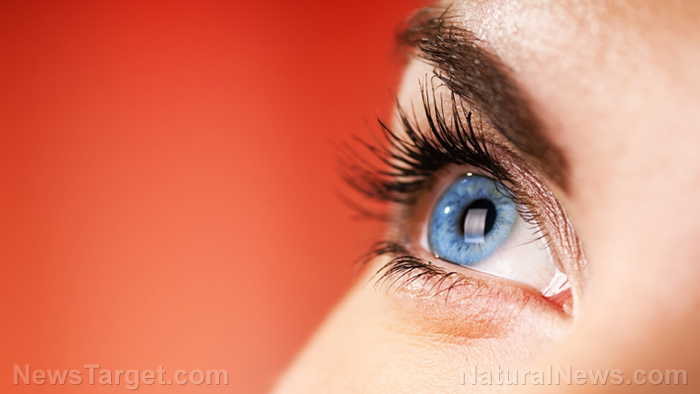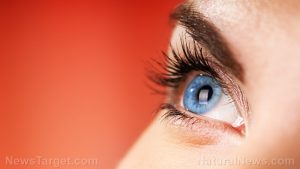
Loiasis – causes, side effects and treatments at NaturalPedia.com
Thursday, May 03, 2018 by Zoey Sky
http://www.naturalpedia.com/loiasis-causes-side-effects-and-treatments-at-naturalpedia-com.html

Loiasis is a disease caused by the eye worm called loa loa. The disease is also called lymphatic filariasis.
Loa loa is a parasite that lives in humans and other primate hosts, and individuals contract the parasite when bitten by infected deer flies (Chrysops). The larvae of the worm then enter the bloodstream and eventually develops into adult worms.
Loa loa parasites are endemic to West and Central Africa. Even if an individual has been bitten by a deer fly, they may not feel any symptoms for at least several months or years. The worms migrate through the skin, which results in local inflammatory reactions called Calabar swellings.
The worms are usually seen migrating across the conjunctiva and cornea of the patient’s eye, hence the name “eye worm.” In some cases, the worm may enter the brain and cause encephalitis.
The worm has a microfilarial, or tiny and thread-like form, that can be found in the patient’s blood and lymphatic fluid during the day. It can be found in the lungs at night.

Known side effects of loiasis
The side effects of loiasis usually include:
- Muscle and joint pain
- Swelling near joints that may also be itchy
- Tiredness and fatigue
- Worms which can be seen crawling under the skin or across the eyeballs
Risk factors for loiasis may include:
- Bites received — The risk of infection also depends on the number of times you were bitten, the deer fly population in the area visited, and the length of your stay.
- Living in rainforests in West and Central Africa — The deer flies that carry the parasite and pass them on to humans are often active during the day, usually during the rainy season. The deer flies can also be found in rubber plantations.
- Traveling — Travelers have a high risk of becoming infected if they stay in areas where they are bitten by deer flies for several months. However, they can still be infected even if they are in an affected area for less than 30 days.
Body systems harmed by loiasis
Loiasis may cause the following complications:
- Cardiomyopathy — The progressive disease of the heart muscle or myocardium.
- Encephalitis — The acute inflammation or swelling of the brain.
- Eosinophilia — Refers to an increase in the number of disease-fighting white blood cells. This may be common but nonspecific.
- Nephropathy — Kidney damage/disease.
Food items or nutrients that may prevent loiasis
The following foods or nutrients can help prevent loiasis:
- Blackberries — Aside from being rich in vitamins and minerals, blackberries also have parasite-destroying properties. The berries can also help infected patients fight off a parasitic infection.
- Papaya — This anti-parasitic food contains enzymes like those found in pineapple. Papayas also contain bromelain and papain that can target parasites and help destroy them.
- Pineapple — Fresh pineapple can help eliminate parasites from the body. A tropical fruit, pineapple contains certain enzymes that target parasites and helps destroy them. Bromelain and papain are two enzymes that can be found in fresh pineapple, and they both have protein-digesting capabilities that minimize parasites so the body can get rid of them.
- Pomegranate — The anti-parasitic properties of pomegranates can help target parasites like tapeworms.
Treatments, management plans for loiasis
Loiasis is often treated using diethylcarbamazine (DEC) or ivermectin (Stromectol). DEC may also be used for prophylaxis. For patients with heavy infections, initial treatment involves albendazole or apheresis.
It can be difficult to treat loiasis. The process is complicated, and DEC is the only drug that kills microfilariae and adult worms. In the U.S., DEC is only available from the Centers for Disease Control and Prevention (CDC), but only after the laboratory confirmation of loiasis.
Where to learn more
- Certain Parasites Alter Behavior of Their Infected Hosts
- Cleansing the Body of Parasites
- Kill internal parasites easily with these 8 herbs
- Oregano oil eliminates parasites in humans
- Parasites in Your Gut Actually Help Protect You From Allergies
Summary
Loiasis is a disease caused by the eye worm called loa loa. The disease is also called lymphatic filariasis. Loa loa is a parasite that lives in humans and other primate hosts, and individuals contract the parasite when bitten by infected deer flies (Chrysops). The larvae of the worm then enter the bloodstream and eventually develops into adult worms.
The side effects of loiasis usually include muscle and joint pain, swelling near joints that may be itchy as well, tiredness and fatigue, and worms which can be seen crawling under the skin or across the eyeballs.
Loiasis may cause complications like cardiomyopathy, encephalitis, eosinophilia, and nephropathy.
Blackberries, papaya, pineapple, and pomegranate can help prevent loiasis.
Loiasis is often treated using diethylcarbamazine (DEC) or ivermectin (Stromectol). DEC can also be used for prophylaxis.
For patients with heavy infections, initial treatment involves albendazole or apheresis.
Sources include:
Tagged Under: Tags: loiasis





